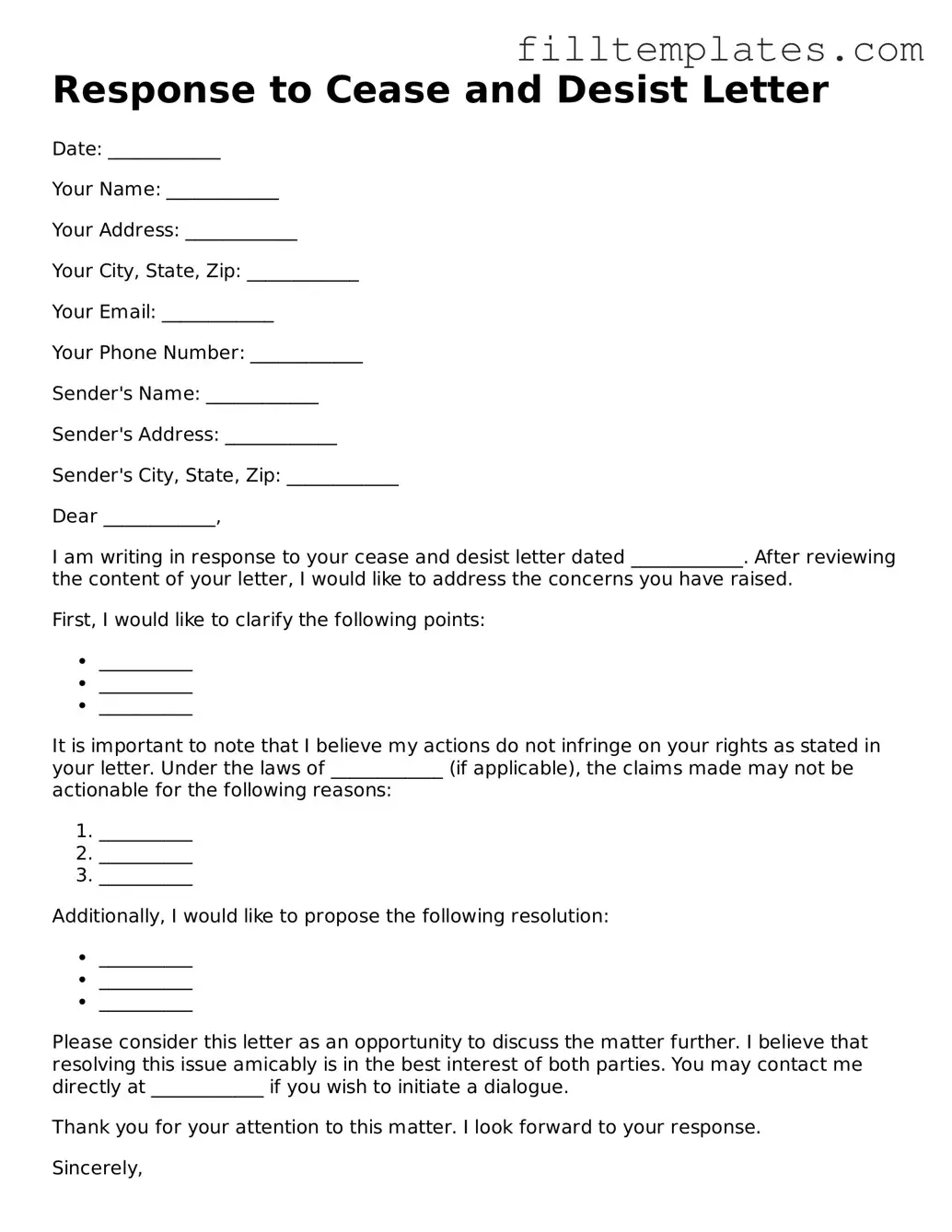Response to Cease and Desist Letter
Date: ____________
Your Name: ____________
Your Address: ____________
Your City, State, Zip: ____________
Your Email: ____________
Your Phone Number: ____________
Sender's Name: ____________
Sender's Address: ____________
Sender's City, State, Zip: ____________
Dear ____________,
I am writing in response to your cease and desist letter dated ____________. After reviewing the content of your letter, I would like to address the concerns you have raised.
First, I would like to clarify the following points:
- __________
- __________
- __________
It is important to note that I believe my actions do not infringe on your rights as stated in your letter. Under the laws of ____________ (if applicable), the claims made may not be actionable for the following reasons:
- __________
- __________
- __________
Additionally, I would like to propose the following resolution:
- __________
- __________
- __________
Please consider this letter as an opportunity to discuss the matter further. I believe that resolving this issue amicably is in the best interest of both parties. You may contact me directly at ____________ if you wish to initiate a dialogue.
Thank you for your attention to this matter. I look forward to your response.
Sincerely,
__________
Signature: ____________
